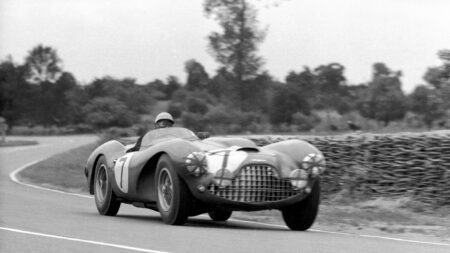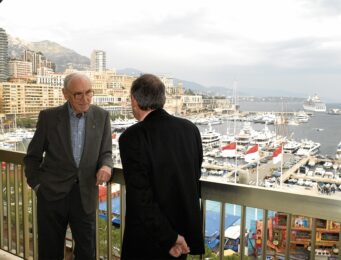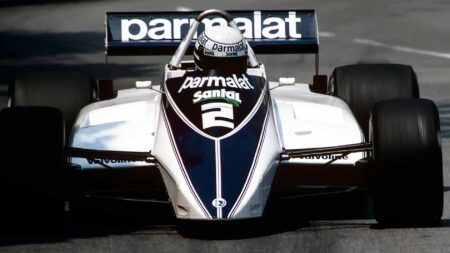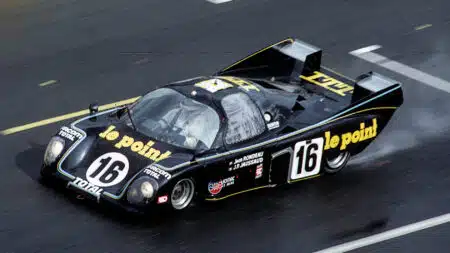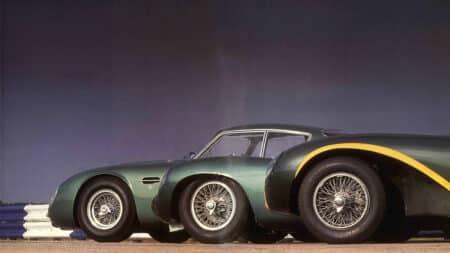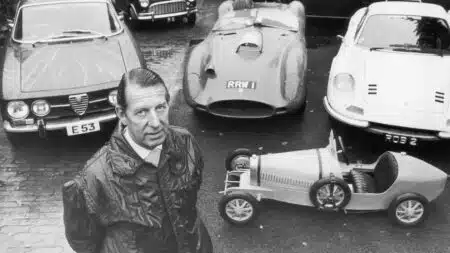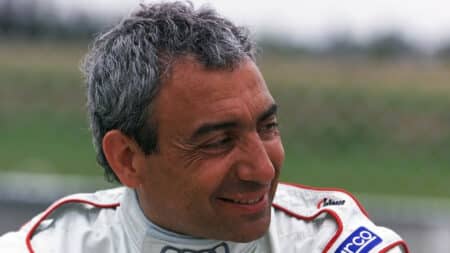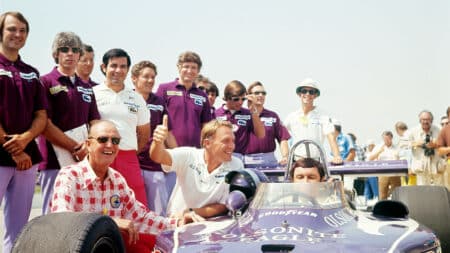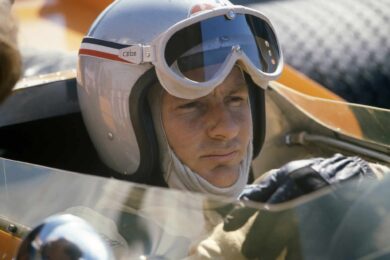He remained with Austin Healey for the 1955 season (taking a fifth at Sebring with Moss) and this was to involve him in the greatest disaster in the history of motor racing. At Le Mans as he pulled out to overtake Mike Hawthorn’s suddenly slowing D-type Jaguar his Healey was struck from behind by the Mercedes 300SLR of Pierre Levegh. The ensuing accident cost the lives of Levegh and over 80 spectators.
It has been suggested that Lance was an innocent victim of circumstance, yet a sizeable portion of the blame was directed at him, and clearly the accident had a great effect on him. That he himself survived Lance attributed as much as anything to the fact that his Healey, unusually, had an aircraft-type rubberised fuel tank. The tail was so badly damaged that a metal fuel tank would almost certainly have split and caused an even worse fire.
In September of that year he had to crash his car to avoid a multi-car pile-up in the Tourist Trophy at Dundrod. Two drivers, Jim Mayers and Bill Smith, died in the accident, and others were injured. Michael MacDowel was sharing the works Cooper Bobtail with Ivor Bueb and he recalls Macklin returning to the pits in a very distraught state. He says: “The poor fellow was totally overcome although he was in no way to blame for the tragedy.” Coming on top of the Le Mans disaster, the Dundrod accident was almost the final straw for Lance, and after sharing a Healey 100S with Archie Scott Brown in the 1956 Sebring 12 Hours (they retired) he did one more race and then stopped racing.
Following his retirement from the sport Lance married Shelagh Cooper, the widow of journalist John Cooper, sports editor at Autocar, and they had two children, Patrick and Miranda.
“We first met at the Dundrod TT in 1950 when I asked him for his autograph,” recalls Shelagh. “I then worked for Dean Delamont at the RAC, so I saw quite a few racing drivers when they came in for their licences, including Lance.” Lance and Shelagh were married in Geneva at the end of August 1956, and lived initially in Monaco and Cap d’Ail.

At Le Mans in 1955 prior to the disaster
Bernard Cahier / Getty Images
Lance became export sales director for Facel Vega luxury cars, and when the company folded he moved to Ireland, bought a defunct railway station and started a battery company. It failed very quickly.
Today Shelagh, now Lady Montague Browne, says: “Lance was very charismatic, a fascinating man. I was never bored. He also gave me two wonderful children.”
Unfortunately the marriage foundered and Shelagh commenced divorce proceedings in 1962, but Lance then met a lady who brought about a complete change in his life. Gill McComish, a young New Zealander who was a very accomplished skier, was living in London in 1963. Lance obtained Gill’s phone number and called her with the words, “I’ve heard about this really good-looking New Zealand bird who is a great skier. Will you meet me for a drink?” Gill demurred, saying that she was going to the local ‘laundromat’ that evening. But Lance obtained directions and they eventually met in front of a row of washing machines.
Today Gill Macklin lives in Auckland, a slim, attractive lady who recalls her years with Lance fondly. “In spite of what he had achieved in life, he was modest and shy, not at all boastful,” she says. “He was also very charming but I sensed that he was a womaniser.” Lance helped Gill to improve her skiing technique and the pair then worked on boats in the Mediterranean, eventually owning a 40-footer which they moored in Paris – a city which was familiar to Lance – and lived aboard.



